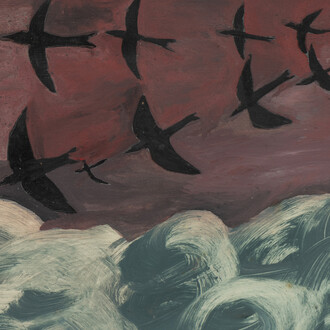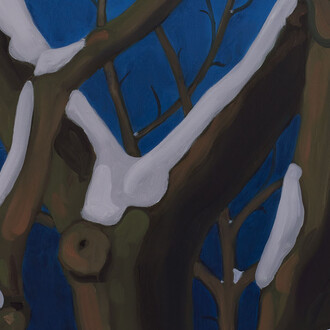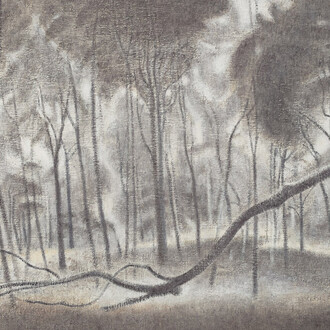Japanese artist Osamu Kojima’s second solo exhibition in the United States will open at the Jason Jacques Gallery on September 12th, coinciding with Asia Week in New York. Kojima’s work ranges from slabbed and stacked ceramic works to small, jagged, natural forms that have the silent nobility of rock left to accrue the signs of age. Through running fissures and eddies of glaze, the false fixity of stone gives way to the beauty of transience.
Kojima lives and works in Mie Prefecture, Japan. His studio is close to Iga and Shigaraki, which have been important ceramic communities throughout history. His frequent visits to Tainan, Taiwan, have prompted Kojima to create works using local materials. He has spent nearly two decades working with clay as well as pigments, glazes, and glass to underscore its material properties. Over the course of his career Kojima has taught and shown work internationally and developed a repertoire of lectures and exhibitions, including St. Luca’s School in Ghent, Belgium, Galerie Pierre in Taiwan, International Academy of Ceramics in Ireland, and Inax Galleria Ceramica in Tokyo. He has taken full advantage of residencies globally, working at Arizona State University and Archie Bray Foundation in Montana.
“Every day I struggle with soil,” states Kojima, who describes his work as "modern natural landscapes.”
Kojima’s sculptures are inspired both by natural scenery and products of the human hand, the indexes of civilization which one may imagine being subsumed by nature. His works highlight the ceramic medium’s ability to evoke its origin in both nature and artifice, speaking to the inescapable essence of any object as trace of the act of its own making. As the glass and glaze crackles and drips, each piece takes on the translucence of water and the reticence of a layered lava-flow. Ancient in appearance, his work seems to have been hewn by the earth itself. It is focused figuratively and literally on organic mechanisms of development, so that the finished work emerges rather than being made. A form emerges with glass pools like water, and colors permeate the roughly-hewn surface of the clay.
Upon seeing Kojima’s work, gallery principal Jason Jacques, struck by the artist’s treatment of material, called it something “truly sublime.” He remarks: “Kojima has the ability to change how we think of clay and glazes. At first, you see stone— and then the human element shines through, and you see the sculptural form placed within its surroundings as both a part of the environment and a trace of the natural world.”
Kojima’s work is filled with a vital energy that grasps at a future vision of times past, providing commentary through a vision of change and impermanence. His process is focused around organic mechanisms of development. Markedly modern and of its time, Kojima’s work also shares an affinity with the crystalline glazes and layered surfaces promoted in the late 19th and early 20th centuries by early European ceramists.
















